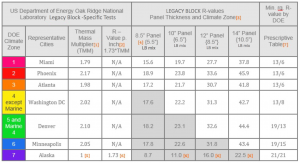The DBMS (Thermal Mass Multiplier) values for Legacy ICF Block walls are based on computer simulation for the eight representative U.S. climates as identified by the Department of Energy (DOE) by Oak Ridge Laboratories*. The resulting dynamic (effective) R-values for four different thicknesses of Legacy Block Inc are illustrated.
Notes:
[1]: Thermal Mass Multiplier (TMM) represents the influence of thermal mass upon the insulating capacity of a wall. (Steady-state R-values were developed for traditional wood-frame walls and do not include the Thermal Mass Benefit.) Variations according to climate zone reflect the influences of temperature and humidity.
[2]: The non-mass steady-state R-value for Legacy ICF Block Mix is 1.73/in. When the Thermal Mass Benefit is included, the resulting R-value is shown. No TMM is applied to flat panels with a thickness under 4”.
[3]: The equivalent thickness of Legacy Block Mix (the Legacy Block Inc insulating material) per Legacy Block element assumes a layer of concrete between two layers of Legacy Block Mix. The combined thickness of the Legacy Block Mix layer can be approximated as follows:
Wall thickness – 3.5” (3”) concrete = number of inches Legacy Block Mix. This simplified calculation matches the testing and computer simulation that was conducted. The R-value of the assembly, however, increases exponentially with increasing thickness. The TMM decreases with more insulation around the concrete (mass). These tendencies have been considered in the values for 12” and 14” walls.
[4]: The 8.5” thick Legacy Block Inc element has not been tested separately. The values in this column are calculated values, based on the other tests.
[5]: Per DOE Prescriptive Table Thermal Mass Benefit is not considered in climate zones 7 + 8. The minimum required steady state R-value is 21.
[6]: Steady state R-values per testing.
[7]: These are prescriptive values, which are general in nature. The first number is the steady-state R-value that is prescribed for non-mass walls (frame); the second is the steady-state value that is required for mass walls unless there is an established, specific TMM higher than the prescriptive multiplier.

Remark: *Computer simulation has been based on a steady-state R-value of 7.6 and a 10″ thick wall made of 25lbs/ft³ EPS concrete.
Slight variations in DBMS values for other thicknesses and basic R-values may result
For all building systems, the “clear” wall R-value (as measured in a hot box or hot plate tests) is higher than it is for the total house. Some building details (corner designs, studs) are designed in a way that they interfere with the insulating envelope. That design may account for a reduction in the total-house R-value of up to 35%. According to the research of Legacy ICF Block details by ORNL, the total-house R-value will not differ more than 3.2%. For wood frame construction this value is usually >9%. Other benefits, such as the tightness of the building or wall-surface temperature, also have an influence. These and other factors contribute to the true performance, as utility-use data supplied by residents of Legacy Block houses often show savings in excess of 50% in some instances.

